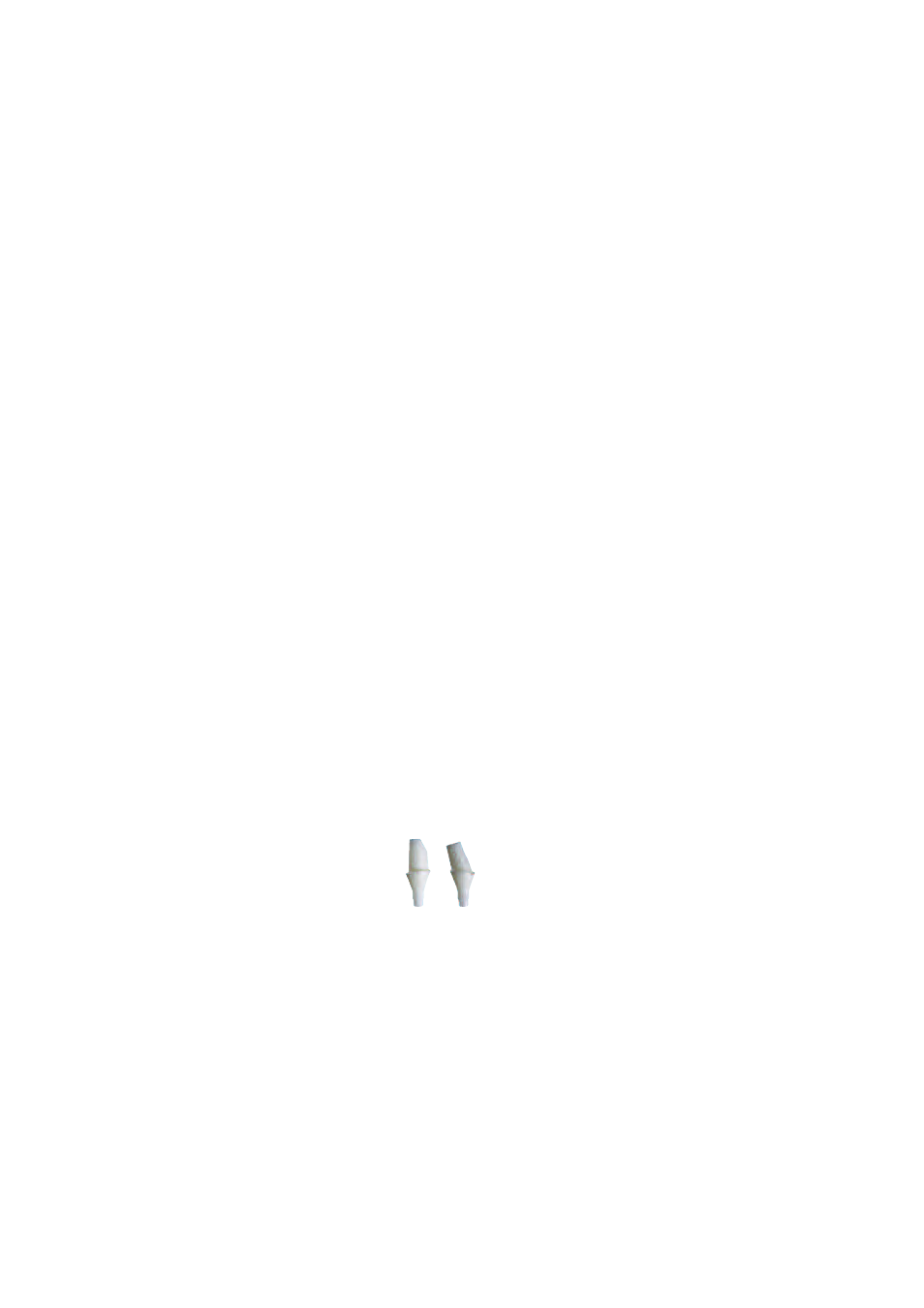E.max, Ceram, General information | questions and answers – Ivoclar Vivadent IPS e.max Ceram User Manual
Page 62

62
Is IPS e.max Ceram also suitable to veneer frameworks made
of other glass-ceramic materials?
IPS e.max Ceram is not suitable to veneer and characterize glass-
ceramic frameworks made of materials other than IPS e.max Press,
IPS e.max ZirPress, and IPS e.max CAD. On the one hand, the CTE of
other glass-ceramic materials is not compatible and, on the other
hand, the shade coordination between framework and veneering
ceramics is not ensured.
Is IPS e.max Ceram (besides IPS e.max ZirCAD) also suitable to
veneer frameworks made of other zirconium oxide materials?
IPS e.max Ceram can be used to veneer frameworks made of
sintered zirconium oxide, HIP zirconium oxide as well as pre-
sintered zirconium oxide with a CTE range of 10.5-11.0 x 10
-6
K
-1
(100–500 °C). The following zirconium oxide materials have been
tested:
– KaVo Everest – Bio ZS (coloured and uncoloured) and Bio ZH
Blanks
– Nobel Biocare – Procera Zirconia
– DeguDent – Cercon Base
– 3M/Espe – Lava Frame (coloured and uncoloured)
– DCS – DC-Zirkon
– Cad.esthetics – Denzir
– Vita – In-Ceram 2000 YZ Cubes (coloured and uncoloured)
– Diatomic – Diadem/Diazir (coloured and uncoloured)
– Wieland – Zeno Zr Disc
– etkon – Zerion
– Sirona – inCoris
– AmannGirrbach – Ceramill Zi
Is IPS e.max Ceram also suitable to individualize and veneer
implant abutments?
Yes. IPS e.max Ceram is suitable to individualize
and veneer zirconium oxide abutments, e.g. the
Straumann
®
Anatomic IPS e.max
®
Abutment, with
a CTE in the range of 10.5–11.0 x 10
-6
K
-1
(100–500 °C). Both an adaption of the emergence profile and a full
direct veneer maybe carried out. It must be made sure that the
abutment is not designed too small in order to ensure adequate
support of the tooth shape and cusps. The instructions of the
respective manufacturers must be observed.
Is IPS e.max Ceram also suitable for the fabrication of
veneers?
IPS e.max Ceram is suitable to fabricate veneers on fire resistant
investment material dies. The material meets the required strength
values (ISO standard: at least 50 MPa). The physical properties, such
as the setting expansion, must be taken into consideration when
selecting the corresponding investment material.
What is the purpose of the IPS e.max Ceram ZirLiner?
IPS e.max Ceram ZirLiners are translucent. Their three major
purposes are as follows:
1. They enable a strong, homogeneous bond with the zirconium
oxide framework.
2. They provide the white, non-coloured zirconium oxide frame-
works with chroma, an in-depth effect, and a shaded character
without increasing their opacity.
3. They also provide the non-fluorescent zirconium oxide frame-
work with a natural fluorescence, thus enabling the fabrication
of lifelike restorations.
Which type of IPS e.max Ceram ZirLiner should be used on
shaded zirconium oxide frameworks?
The clear IPS e.max Ceram ZirLiner should be used on shaded
zirconium oxide frameworks. The transparent character of the
IPS e.max Ceram ZirLiner does not affect the framework shade.
An outstanding bond as well as natural-looking fluorescence is
achieved. If shaded frameworks from other manufacturers are used,
the colour compatibility of the IPS e.max Ceram and that of the
framework must be ensured.
Can zirconium oxide frameworks also be veneered without
IPS e.max Ceram ZirLiner, or with a wash firing of dentin
material, respectively?
An IPS e.max Ceram ZirLiner in the corresponding shade must
always be applied prior to veneering. A wash firing, e.g. with
dentin, as it is done for glass-ceramics, is not sufficient.
Why is the IPS e.max Ceram ZirLiner powder green and how
should it be applied?
Since zirconium oxide is white and, therefore, shows a poor contrast
to tooth-coloured and/or white powders, the IPS e.max ZirLiner was
given an identification colour to render its application more simple
and efficient. The IPS e.max Ceram ZirLiner consists of a very fine
powder and appears somewhat thick due to the dense packing of
the grains. Make sure that the material is applied in an even,
greenish coat. If the shade is too pale, the layer is too thin. After fir-
ing, however, the ZirLiner demonstrates a layer thickness of
approximately 0.1 mm.
e.max
®
Ceram
General Information | Questions and Answers
IPS